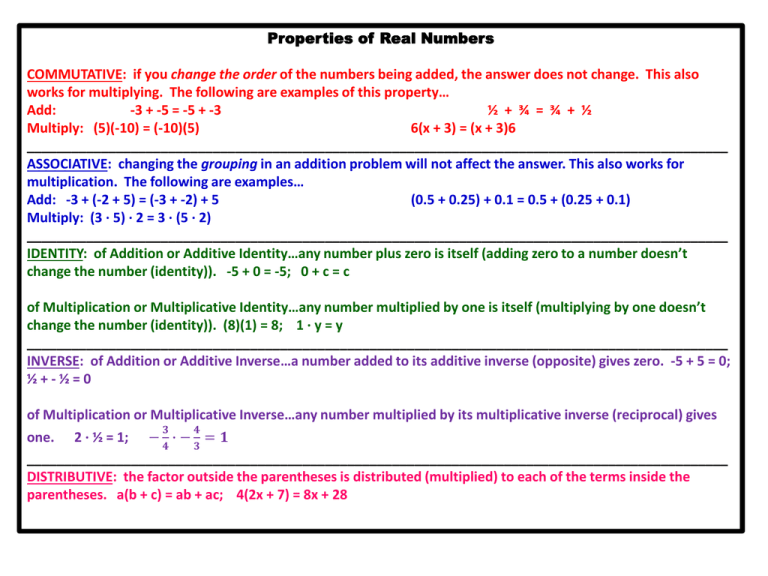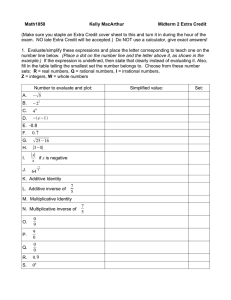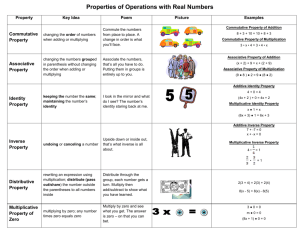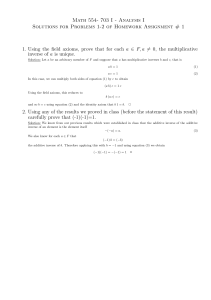Properties of Real Numbers change the order Add:
advertisement

Properties of Real Numbers COMMUTATIVE: if you change the order of the numbers being added, the answer does not change. This also works for multiplying. The following are examples of this property… Add: -3 + -5 = -5 + -3 ½ + ¾ = ¾ + ½ Multiply: (5)(-10) = (-10)(5) 6(x + 3) = (x + 3)6 ______________________________________________________________________________________________ ASSOCIATIVE: changing the grouping in an addition problem will not affect the answer. This also works for multiplication. The following are examples… Add: -3 + (-2 + 5) = (-3 + -2) + 5 (0.5 + 0.25) + 0.1 = 0.5 + (0.25 + 0.1) Multiply: (3 · 5) · 2 = 3 · (5 · 2) ______________________________________________________________________________________________ IDENTITY: of Addition or Additive Identity…any number plus zero is itself (adding zero to a number doesn’t change the number (identity)). -5 + 0 = -5; 0 + c = c of Multiplication or Multiplicative Identity…any number multiplied by one is itself (multiplying by one doesn’t change the number (identity)). (8)(1) = 8; 1 · y = y ______________________________________________________________________________________________ INVERSE: of Addition or Additive Inverse…a number added to its additive inverse (opposite) gives zero. -5 + 5 = 0; ½+-½=0 of Multiplication or Multiplicative Inverse…any number multiplied by its multiplicative inverse (reciprocal) gives 𝟑 𝟒 one. 2 · ½ = 1; − ∙ − = 𝟏 𝟒 𝟑 ______________________________________________________________________________________________ DISTRIBUTIVE: the factor outside the parentheses is distributed (multiplied) to each of the terms inside the parentheses. a(b + c) = ab + ac; 4(2x + 7) = 8x + 28











